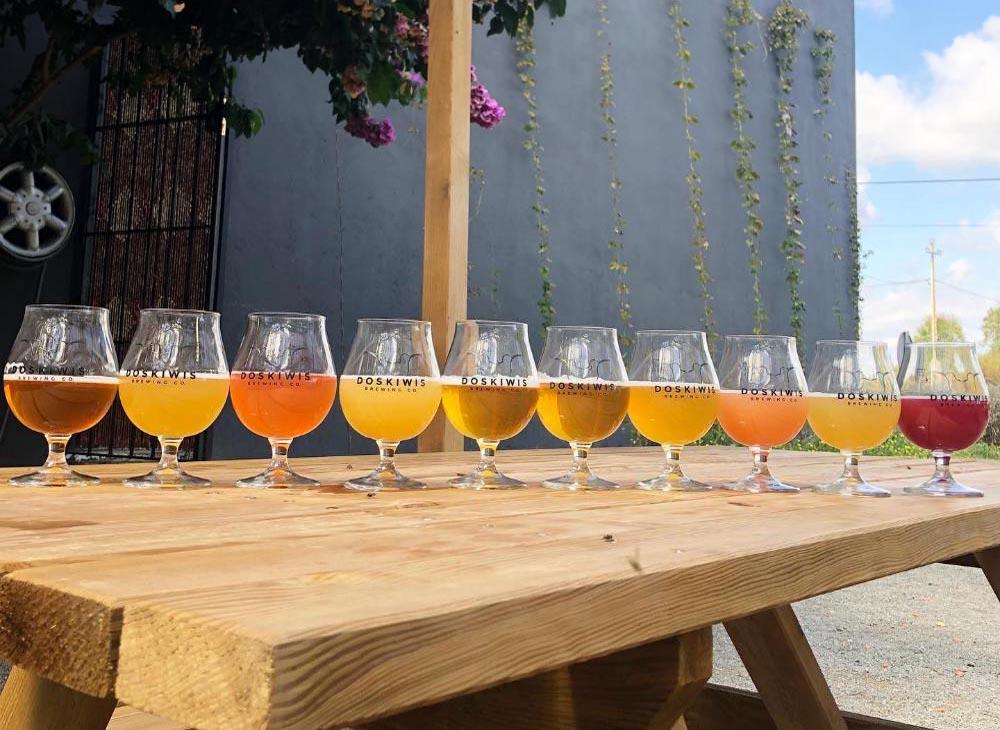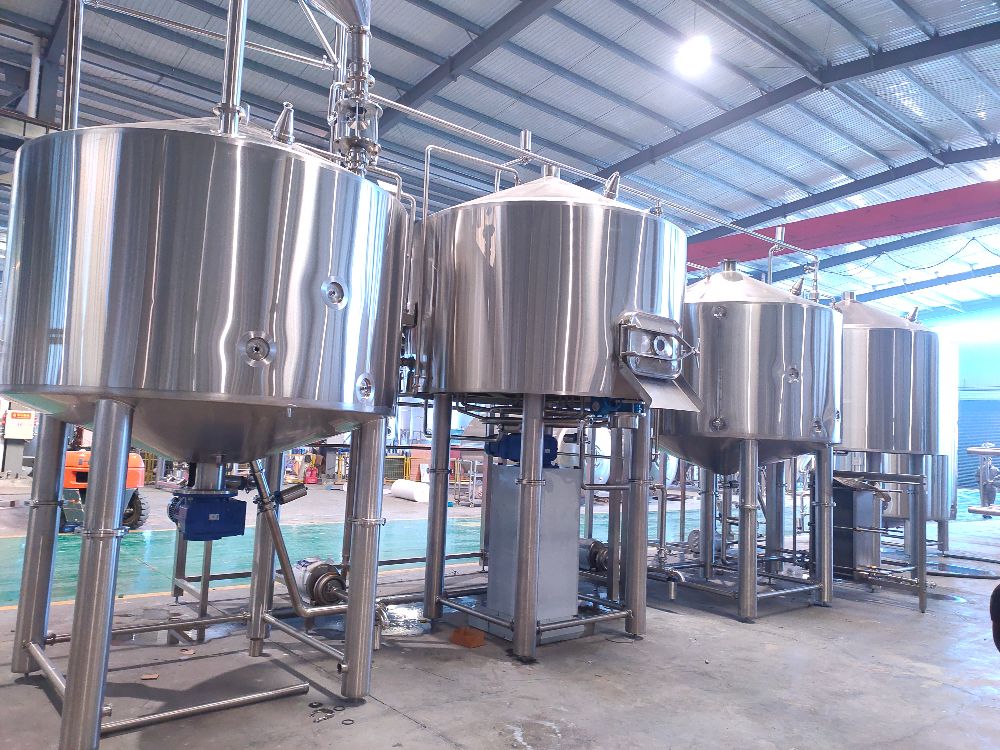How Do I Know If My Beer brew is Fermenting?-- Part I
- Feb 19, 2022
- 172
- tiantai
A lot should be considered when you plan to build your own brewery like brew tech,brewery equipment configuration,beer machines,conical fermenters,conical fermenter,fermenter conical,fermenter beer,conical fermentor, brewery equipment cost and price,find a location for brewery install, license and regulation of brewery. This article column is specially to answer some common question during brewing.
New Beerbrewers that aren’t yet sure of the process will likely wonder how to know if their Beerbrew is fermenting, how long it takes to start fermenting, and the common signs they should be watching out for. Personally, I constantly worried that my batch was ruined anytime the fermentation process didn’t start as quickly as I thought it should. As such, I thought it would be the perfect topic to tackle today!

Determine whether or not your Beerbrew is fermenting by looking for the signs of fermentation. Typically, you will see bubbles escaping from the airlock, swirling particles inside the beer, a yeast cake (krausen) forming on top of the beer, and trub forming at the bottom of the fermenting vessel.
While there are some obvious signs to watch out for, active fermentation is not always easy to spot and it’s important to consider how long the process takes to start and finish. Let’s explore all aspects of this question and learn more detail about each one!
How long does Beerbrew take to start fermenting?
Check for the most common fermentation signs
oBubbles coming out of the airlock
oSwirling particles inside the beer
oYeast cake (krausen) forming on top of the beer
oTrub forming at the bottom of the fermenter
Last Thoughts
How long does Beerbrew take to start fermenting?
This is a bit of a trick question, really.
Technically, fermentation starts almost immediately after you have pitched your yeast into the wort but you aren’t likely to see signs of active fermentation for 12-36 hours. Ideally, it’s on the shorter end of the range.
Where your batch lands on this time scale is dependent on several factors related to recipe, yeast health, etc. Here are the most common aspects to consider:
Temperature – This is perhaps the most important variable to consider for your fermentation because it can affect both the start time and the finished product. Essentially, yeast are more active the warmer the temperature is in their environment. Likewise, if things get too cold they will work more slowly or might even stop fermenting altogether. Typically, your ideal fermentation temperature is right around the ideal room temperature (68 to 72°F). Check your yeast packaging for information specific to that strain.
Type of yeast – As I just mentioned, different yeast strains will prefer different temperatures for their fermentation. Similarly, different strains will naturally ferment faster or slower than others. Different strains might also show less visible signs that something is happening and have a longer, less intense process.
Quantity of yeast – Among the many reasons to use a yeast starter is because it will start your fermentation off quicker, in general, than if you simply pitched one packet of dry yeast into your wort. That’s because a yeast starter allows the yeast to absorb nutrients, prepare for the fermentation process, and start to multiply. More yeast pitched will lead to a faster start.
Aeration – While yeast don’t necessarily need oxygen to ferment your beer, it does help. Extra oxygen inside the wort can help the yeast start off with a healthier and more robust fermentation. If you want to learn way more than you need to know about this topic, check out this excellent resource from More Beer.
Recipe – Much like the type of yeast you choose, your beer’s recipe can have a significant impact on how quickly your fermentation starts off and how easy it is to observe. Recipes with lots of dark, roasted malts, for example, can literally make it harder to see what is happening inside your beer. High-gravity beers, such as strong ales and the like, will also have a lot more fermentable sugar for the yeast to work on so it can take them longer to get started and longer to finish.
Now that we’ve established how long you should expect to wait to see signs of fermentation, along with things you should consider along the way, let’s check out the most obvious signs of fermentation.
For the rest reasons, please find the part II in next article.
New Beerbrewers that aren’t yet sure of the process will likely wonder how to know if their Beerbrew is fermenting, how long it takes to start fermenting, and the common signs they should be watching out for. Personally, I constantly worried that my batch was ruined anytime the fermentation process didn’t start as quickly as I thought it should. As such, I thought it would be the perfect topic to tackle today!

Determine whether or not your Beerbrew is fermenting by looking for the signs of fermentation. Typically, you will see bubbles escaping from the airlock, swirling particles inside the beer, a yeast cake (krausen) forming on top of the beer, and trub forming at the bottom of the fermenting vessel.
While there are some obvious signs to watch out for, active fermentation is not always easy to spot and it’s important to consider how long the process takes to start and finish. Let’s explore all aspects of this question and learn more detail about each one!
How long does Beerbrew take to start fermenting?
Check for the most common fermentation signs
oBubbles coming out of the airlock
oSwirling particles inside the beer
oYeast cake (krausen) forming on top of the beer
oTrub forming at the bottom of the fermenter
Last Thoughts
How long does Beerbrew take to start fermenting?
This is a bit of a trick question, really.
Technically, fermentation starts almost immediately after you have pitched your yeast into the wort but you aren’t likely to see signs of active fermentation for 12-36 hours. Ideally, it’s on the shorter end of the range.
Where your batch lands on this time scale is dependent on several factors related to recipe, yeast health, etc. Here are the most common aspects to consider:
Temperature – This is perhaps the most important variable to consider for your fermentation because it can affect both the start time and the finished product. Essentially, yeast are more active the warmer the temperature is in their environment. Likewise, if things get too cold they will work more slowly or might even stop fermenting altogether. Typically, your ideal fermentation temperature is right around the ideal room temperature (68 to 72°F). Check your yeast packaging for information specific to that strain.
Type of yeast – As I just mentioned, different yeast strains will prefer different temperatures for their fermentation. Similarly, different strains will naturally ferment faster or slower than others. Different strains might also show less visible signs that something is happening and have a longer, less intense process.
Quantity of yeast – Among the many reasons to use a yeast starter is because it will start your fermentation off quicker, in general, than if you simply pitched one packet of dry yeast into your wort. That’s because a yeast starter allows the yeast to absorb nutrients, prepare for the fermentation process, and start to multiply. More yeast pitched will lead to a faster start.
Aeration – While yeast don’t necessarily need oxygen to ferment your beer, it does help. Extra oxygen inside the wort can help the yeast start off with a healthier and more robust fermentation. If you want to learn way more than you need to know about this topic, check out this excellent resource from More Beer.
Recipe – Much like the type of yeast you choose, your beer’s recipe can have a significant impact on how quickly your fermentation starts off and how easy it is to observe. Recipes with lots of dark, roasted malts, for example, can literally make it harder to see what is happening inside your beer. High-gravity beers, such as strong ales and the like, will also have a lot more fermentable sugar for the yeast to work on so it can take them longer to get started and longer to finish.
Now that we’ve established how long you should expect to wait to see signs of fermentation, along with things you should consider along the way, let’s check out the most obvious signs of fermentation.
For the rest reasons, please find the part II in next article.



.jpg)
